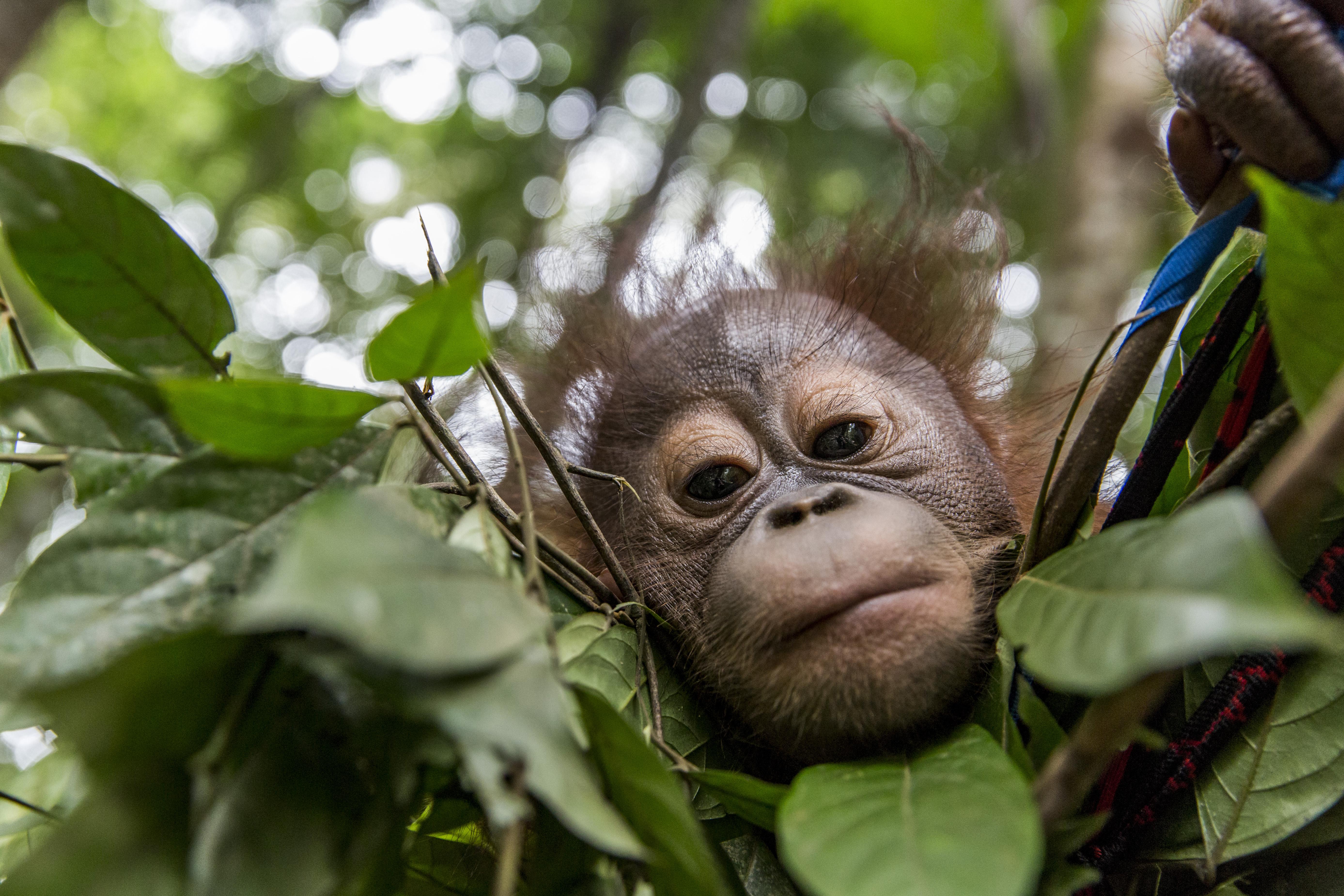
Saving Orangutans
Reintroduction program for rescued orangutans in Borneo
Orangutans in Indonesia are severely threatened by extinction through deforestation and shrinking habitats. They are victims of the wildlife trade and the palm oil, tropical timber, and coal industries. On palm oil plantations, they are often killed for money, as they are considered to be "crop thieves." The killing of these great animals leaves many vulnerable orangutan orphans exposed in the rainforest, and many end up being illegally sold by animal dealers as pets.
So much of Borneo’s forest has now been destroyed that the International Union for Conservation of Nature (IUCN) officially classified the Borneo orangutan as critically endangered at the beginning of 2016. Studies have shown that the orangutan population in Borneo has shrunk by 80 percent and without serious and immediate protection they will be doomed to extinction.

Human land use destroying orangutan habitat
The forest is the orangutan’s home, yet human activities are shrinking their world at an alarming rate. Between 1972 and 2015, roughly 25 million acres of the Borneo orangutan’s habitat was destroyed, leaving less than half of their original home area intact. The main culprits of this are unsustainable practices such as palm oil monocultures, mining, and clear-felling logging; industries that are showing no signs of slowing down despite their irreversible impact on the planet and its wildlife.
The Indonesian government assigns protected areas of forest where these activities are forbidden, which serves to secure the remaining orangutan habitat. However, 75% of orangutans on Borneo live outside of these protected areas. This means that the orangutan population is plummeting daily, with an estimated 100,000 Bornean orangutans lost between 1999 and 2015 (an average of 17 a day!). Because orangutans only give birth once every 6-8 years, each loss can have devastating effects for generations to come.
As their habitat shrinks, orangutans struggle to find food, since they would typically roam long distances in search of seasonal fruit. The lack of available food means that they often "trespass" on human settlements, which have encroached upon their habitat. This leads to conflict with locals and orangutans being killed to protect crops.
It is difficult to estimate just how many orangutans die as a result of these interactions, but one study estimates that between 1,950 and 3,100 are killed every year in Kalimantan (Indonesian Borneo) alone.
The Loss of a Mother
As a result of their shrinking habitat, orangutan mothers are increasingly confronted by human beings. Many mother apes do not survive these encounters and as a result their children become orphans. This makes their prospect of survival very slim, as orangutans rely on their mothers for protection, comfort, and to show them how to thrive in the jungle.
Like humans and other great apes, most orangutan behaviors are not innate; they are learned. This means they need years of guidance before: they can build a sturdy nest to sleep in the treetops; they have the skills to identify and evade predators; they can be sure that the fruit they choose to eat is delicious and juicy, and not poisonous; and they learn how to use tools to crack open succulent fruity pulps hidden behind rock-hard shells. Given that some 15,000 plant species exist on Borneo, it should come as no surprise that the loss of a mother leaves orangutan babies feeling terrified and helpless.

The ORANGUTAN FOREST SCHOOL
The ORANGUTAN FOREST SCHOOL, conducted by our partner Yayasan Jejak Pulang (means ‘return home’), in cooperation with the Indonesian Ministry of Forestry, is where the rescued orangutan orphans, confiscated by the Authorities, are rehabilitated. There they learn all the skills they need to be able to return home to the wild once they are prepared.
The education of orangutan orphans takes several years. The process demonstrates how closely humans and apes resemble each other, as orangutan children don't reach adulthood until they're around 14 years old. Education begins in infancy or early childhood and continues until the orangutan is old enough to come to terms with living alone in the wild. This means that training a single orangutan orphan typically takes over ten years.
Twelve orphans (seven males, five females) from the ages of just 3 to 13 years make up make up the first cohort of pupils at the 247-acre Forest School, led by Dr. Signe Preuschoft of FOUR PAWS, a primatologist with over 20 years of experience working with great apes.
The rehabilitation process in the ORANGUTAN FOREST SCHOOL, conducted by our partner Yayasan Jejak Pulang in cooperation with the Indonesian Ministry of Forestry, is aligned with the natural development of immature orangutans and follows a science-based curriculum. Most confiscated orangutans are orphans younger than 5 years old. As infants, these orangutans are too young to be released and cannot live independently; they still need (human) surrogate mothers and dedicated nurturing before they can fend for themselves in the wild.
With a team of "foster mothers", they attempt to impart the knowledge the orphans need to survive on their own in the wild. The bond between a mother and a child can never be replaced, but the aim of the project is to give our orangutans the best possible chance of surviving, thriving, and eventually reproducing, so that they can create an unshakable bond with their own child.
Read more about the FOREST SCHOOL here.






